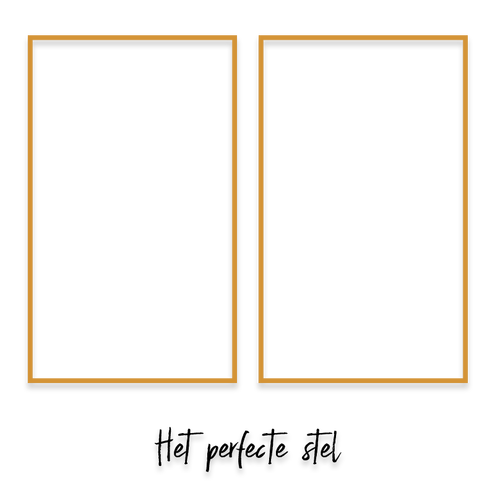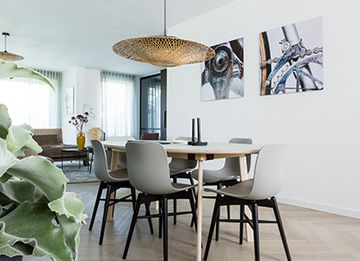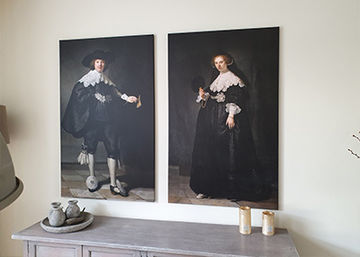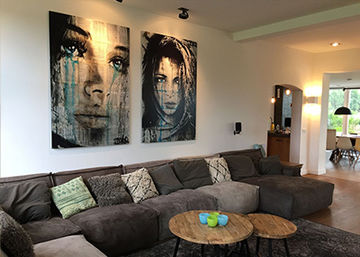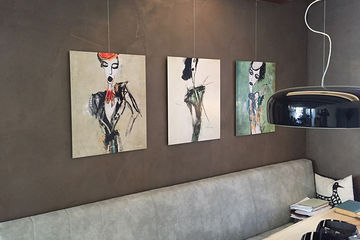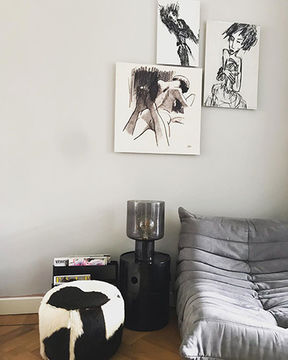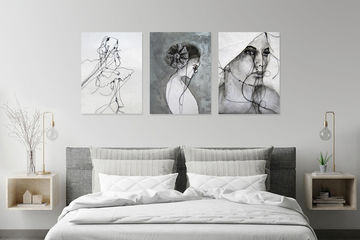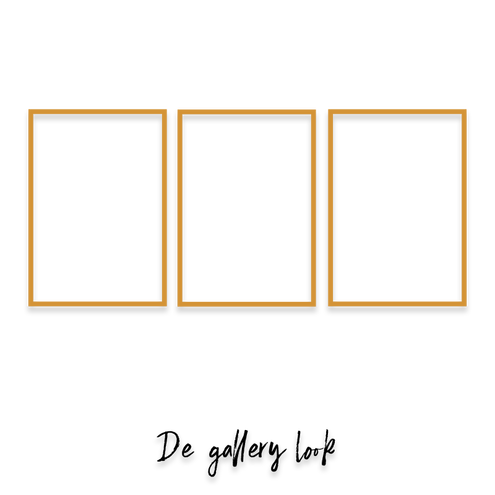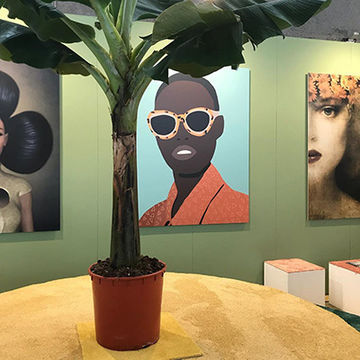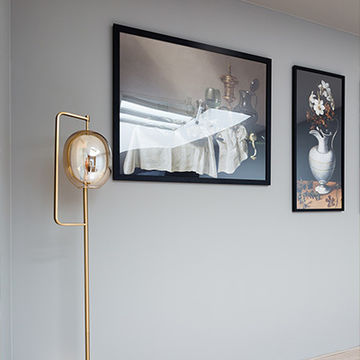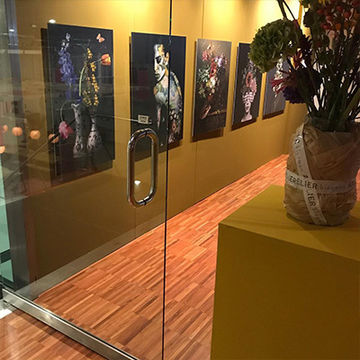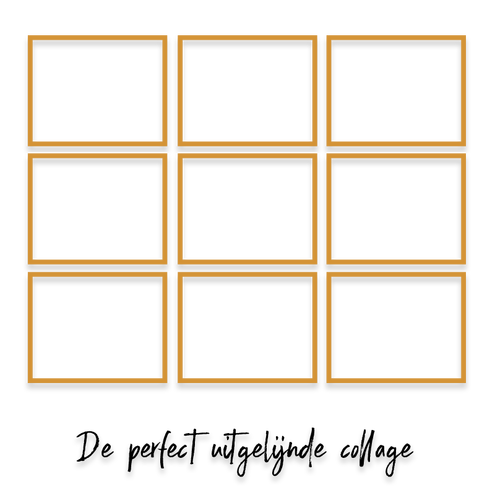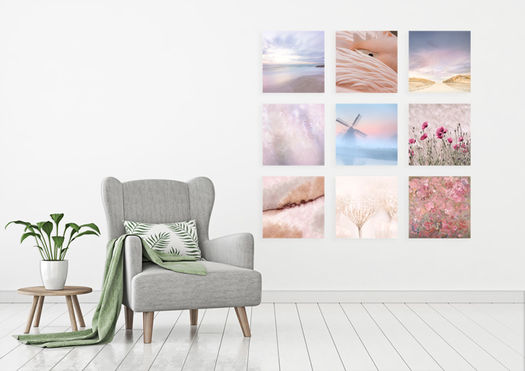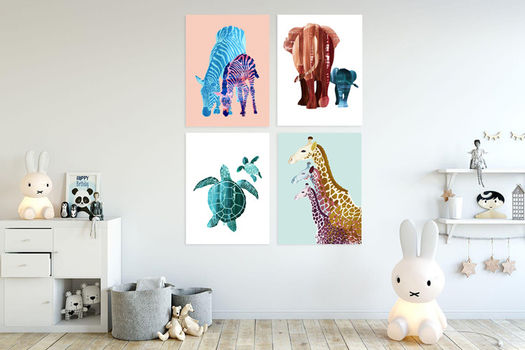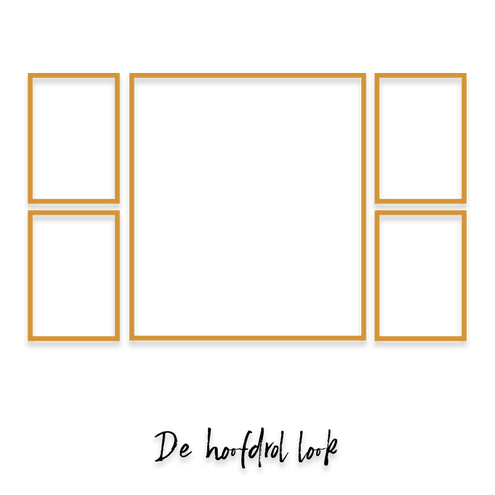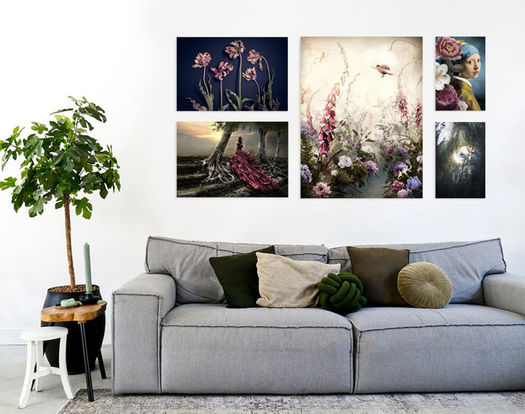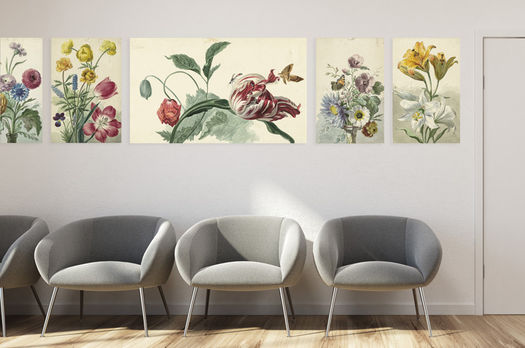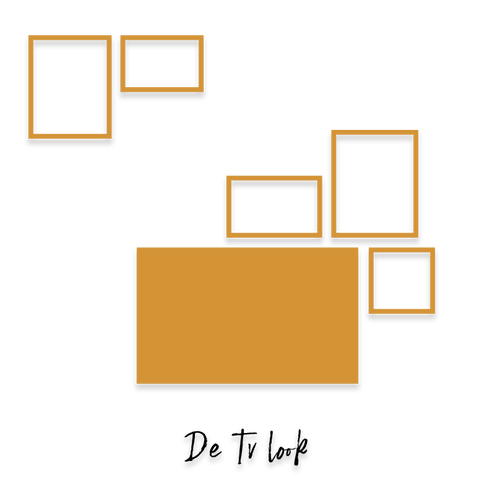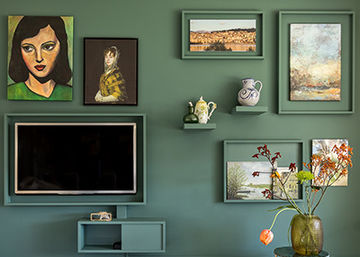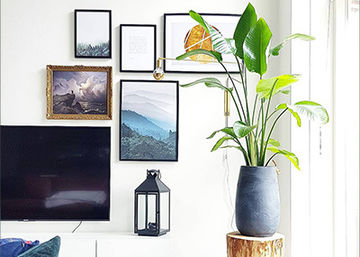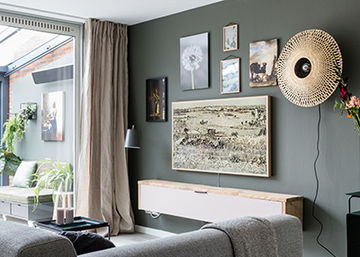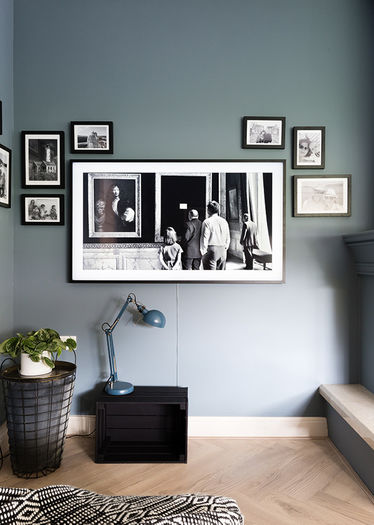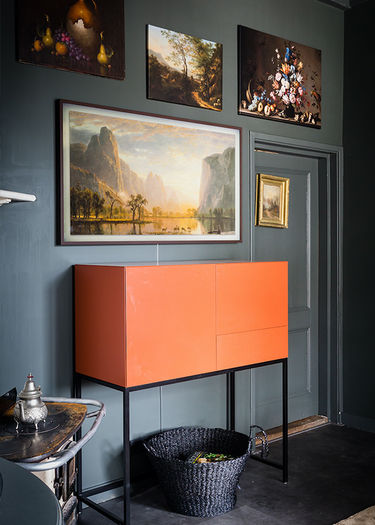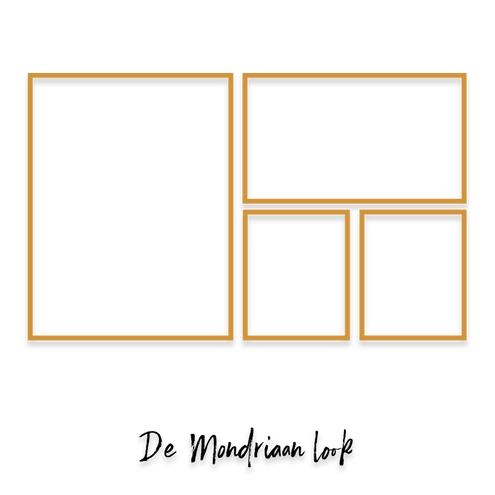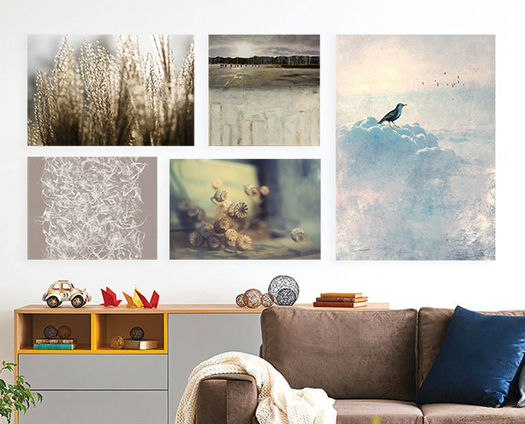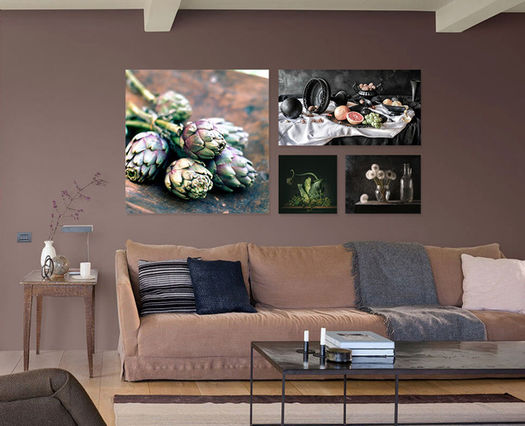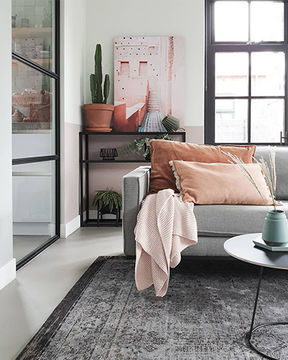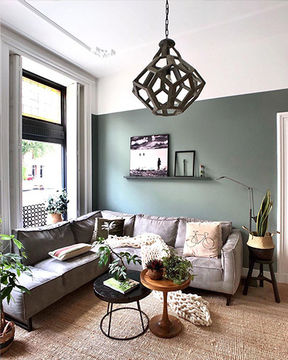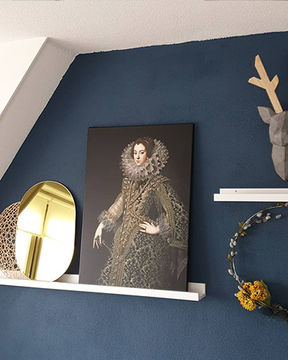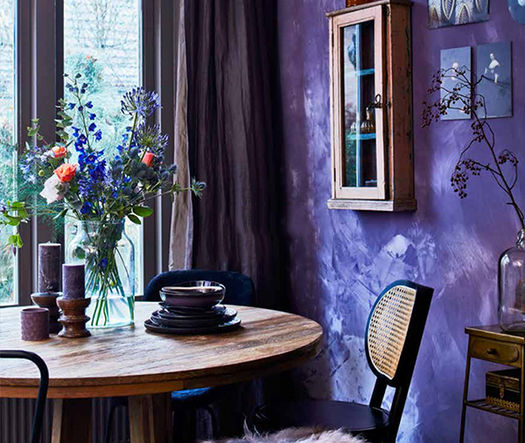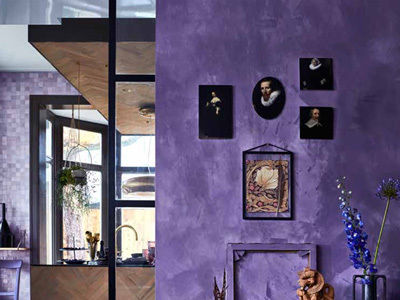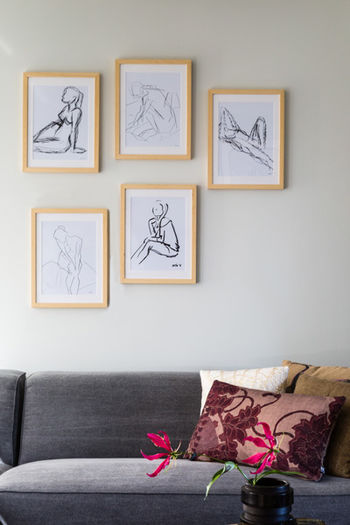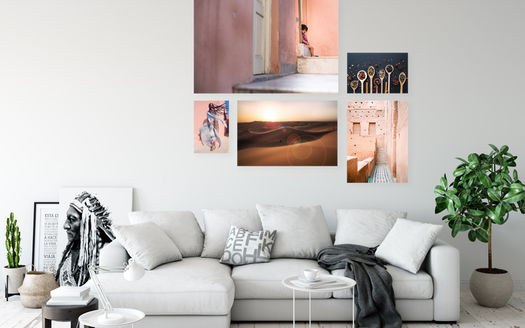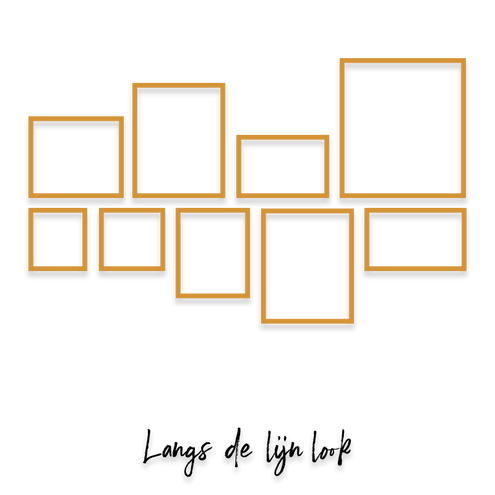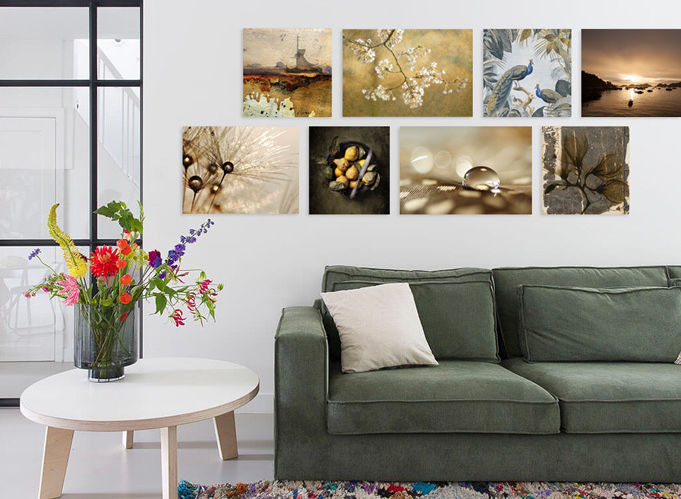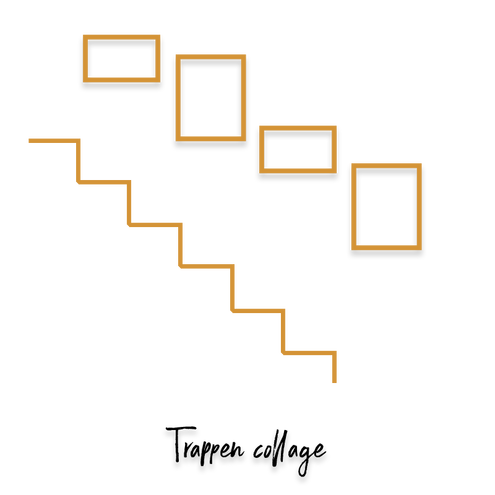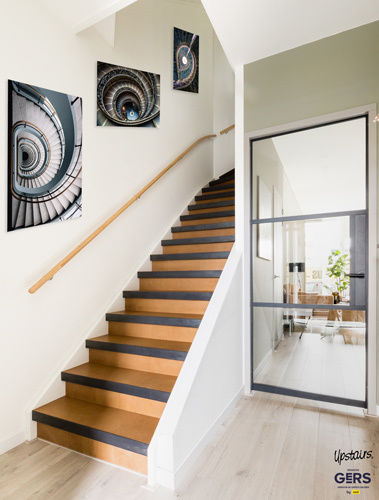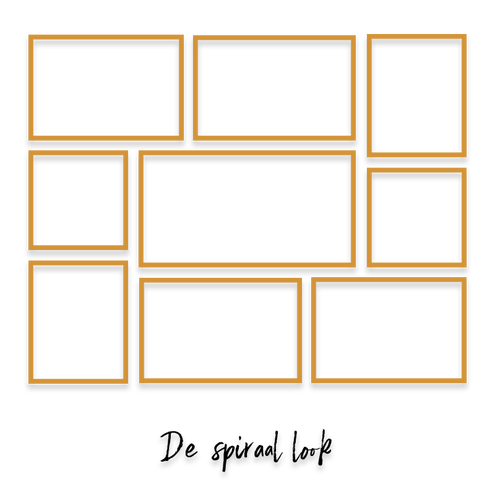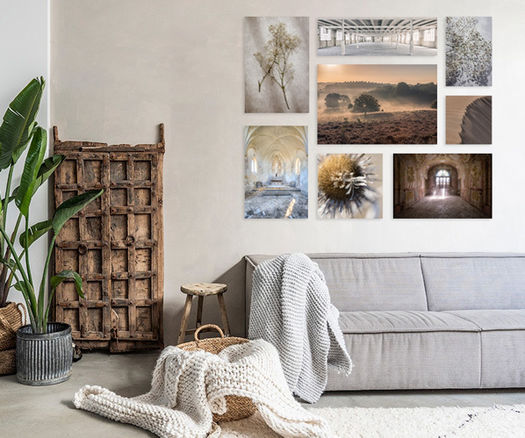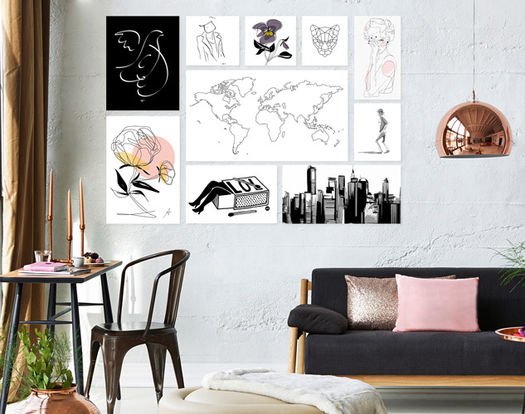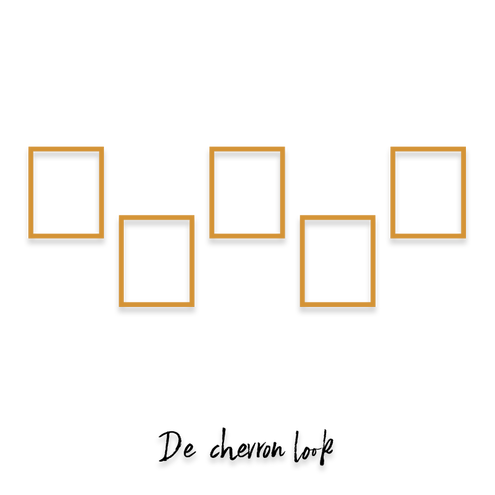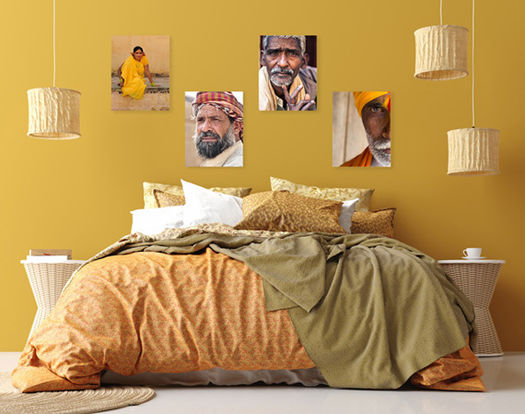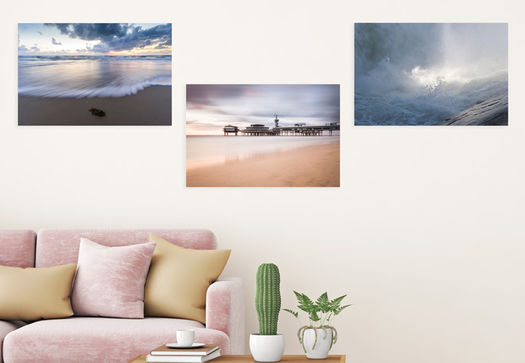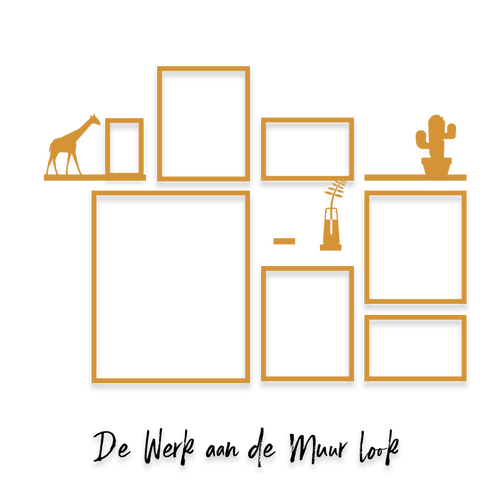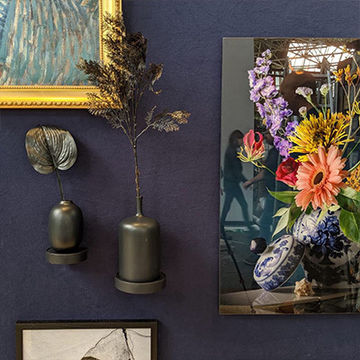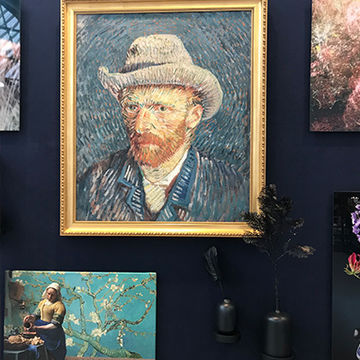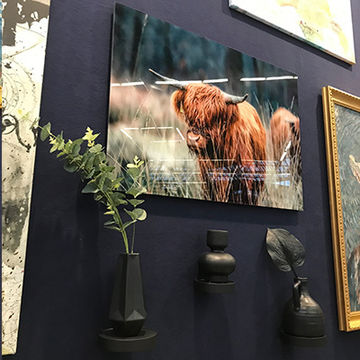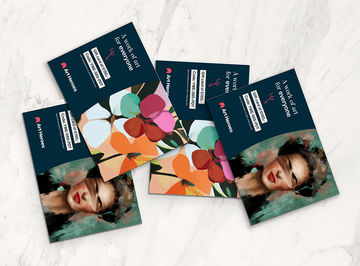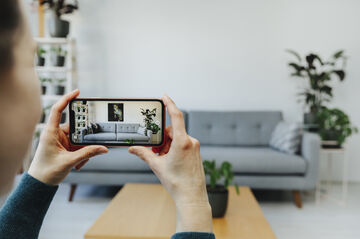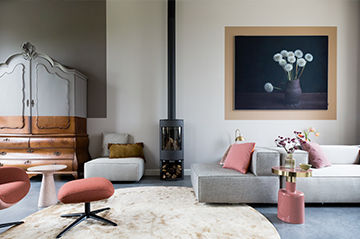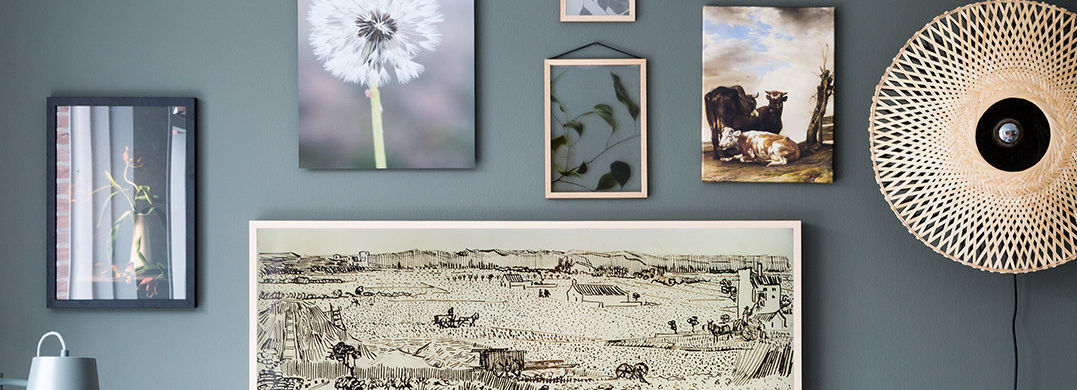
15 tips for a gallery wall at home
Do you have an empty wall and are looking to make a real statement? Create your own art wall! Our stylists share their best tips on how to hang the most beautiful art collages on the wall.
Tip 1: The perfect duo
Two works side by side can form a base or even make up the whole wall. Try to unify the works. Think of different images using the same palette, or a well-known duo like Oopjen and Marten. Using works by the same artist can provide continuity of style, or choose for similar sizes and forms. Another great match can be a typographic print combined with fine-art photography. Variety can also be complementary.
Get inspired by other duos
Tip 2: Triple enjoyment
3 works can give a fascinating twist as work is much more typically paired. Worried about ending up with a crowded overly fussy look? Stick to a single theme, colour or artist. Want to mix things up? Then give one work the lead role. That way, you can emphasise your favourite work, but give it more body through addition. This will give you a playful look without being too busy.
Follow the same rules as for the perfect couple, taking all three works into consideration at the same time. Don’t hang too far apart to preserve unity and, above all, try on paper before approaching the wall.
Get inspired by other trilogies
Tip 3: Just like in a museum
Do you like galleries where photos are presented in a clean line? This can also work at home! Stick to a few works and think about the background colour of your wall. White is the classic gallery effect but don’t underestimate the impact of works against a dark wall. The Rijksmuseum, for example, hangs in this way, helping the works to stand out and awarding a classic look.
Build your gallery from the centre outwards - balance your images and make sure the central line through the gallery is at 145 cm in height. Maintain the same distance between each work. How many centimeters should this be? That also depends on the space where you are going to hang it. Feel free to contact us, if you’d like us to think along with you.
Get inspired by other galley walls
Tip 4: Perfection
Like the idea of multiple images, but love a sleek interior? Then the perfectly aligned collage will suit you. The works are all the same size and aligned as a whole in the same shape. Of course, you can make this as big or as small as you like. Looking for inspiration? Think black-and-white vintage photos, or create a rainbow of colour. It might also work to theme by places you’ve travelled to, giving a timeline and added interest. Framed materials, prints or canvases, work well for this.
Scroll through our collection and choose works that complement each other and are the same proportion. Create a grid, keeping 5 - 10 cm between frames. First, draw the grid accurately and calculate it in ratio to your blank wall. That way you will know exactly what size artwork you need!
Get inspired by these wall art collages
Tip 5: Just like in the film
Give one work the lead role. Starting from here, create a linear pattern. Hang straight up, left to right, or diagonally downwards. Dare to experiment. Lay the whole thing out on the ground first so that you know exactly which works work where.
Dare to use contrasting materials. Think, for example, of different coloured frames alternating with canvas.
Tip 6: When you consider the TV as a work of art
Though we’ve grown used to them, the TV is frequently an eyesore. When off, it’s a black hole that can dominate the wall against which it stands. Think of the TV as part of your gallery and include it in your scheme. Frame the television or even think of a product like Samsung’s ‘Frame’ that displays art when not in use.
Mixing works with other elements in your room is an excellent way of adding interest and balance. Try alternating works with a lamp or a fun vase for a playful effect.
Get inspired by these wall collages including a TV
Tip 7: Mondrian gallery wall at home
If you love abstract, take inspiration from Mondrian. The pioneer of abstraction was inspired by rectilinear lines and his images and aesthetic have proved spectacularly influential. The world’s greatest designers and architects have found something in his horizontal and vertical lines; let him inspire your art wall!
Get inspired like Mondrian
Tip 8: Make use of shelves
An ideal way to create a fun gallery wall is to use shelves. It both breaks up and unites your scheme and has the added advantage of allowing you to change and reposition works to your heart’s content. If you want to foreground the art on the shelf, stick to shelves in the colour of your wall, for example, white shelves with a white wall. Do you like to make bold choices? Then choose a bright colour and incorporate it into the art you put on the shelf, blending everything together and becoming part of the attraction.
Get inspired by other shelving techniques
Tip 9: Vintage gallery wall
Create a playful mix with the existing works of art you already have in your home. Complement what you’ve picked up along the way or have been given over the years with something new. Make a virtue of the different sizes and formats that such ‘found’ art is likely to bring. Hanging a varied wall sees each image as an opportunity to catch the eye. Make sure the internal distances are right so that the works don’t hang in each other’s shadows. Finish the look with plants and vintage furniture.
Get inspired by other's vintage art collages
Tip 10: Modern mix
This involves a precisely aligned mix of works. Despite differing styles, colours or artists, create a whole by hanging in a fused pattern. In this look, you can easily add height or width. It differs from the vintage look through the maintenance of a clean line and the lack of spacing adds a more modern feel.
Get inspired by these modern art walls
Tip 11: Along the line
Draw a horizontal line, also called the heart line, and hang works either over or under this line. The overall impression is clean, but pleasingly eccentric. Do you have a high narrow wall? A vertical line is also possible! An original look that can give the impression of even more height.
Bonus tip: Go for odd numbers! Often a prettier overall effect.
Get inspired along the line
Tip 12: The perfect stairway
The wall along the stairs is a perfect place for a gallery wall and it’s typically empty and waiting to be filled. The steps give you a perfect starting point to hang art neatly aligned. But what is the right height? Measure 145 cm from the floor. This is the point where the centre of the artwork should hang. Then measure 145 cm from every third step. Draw a diagonal line and you're ready to hang the works!
Check out our staircase collection! In it, our stylists have collected their favourite works for alongside your stairs. You can find the collection here. Another great idea: hang beautiful pictures of abandoned stairs above your staircase. Not sure what to expect? Be surprised by the staircase collection.
Get inspired by other stairway walls
Tip 13: The spiral look
Choosing the spiral look is choosing dynamism. The shape gives an immediate effect of movement and can point to something larger for those interested in symbolism: a spiral symbolises life, letting go, depth and journeying. Stick to personal works and find these meanings in your hanging.
Get inspired by the spiral looks
Tip 14: Herringbone pattern
Chevrons are classic and - for us - just plain chic. Though most associated with floors, this pattern can also work for walls where it breaks the idea of the horizontal without abandoning the clarity and focus of the line.
Get inspired by other herringbone patterns
Tip 15: The Art Heroes look
Those who spotted us at the vtwonen & design fair were able to admire our current favourite hang. The Art Heroes look mixes and matches artworks with other decorative elements. The bold use of paint colours binds the whole design and prevents the look from being too busy. It’s varied but the focus remains on the art.
Is this your look? Share your creativity with #ArtHeroes and let us be inspired by your own creations.

